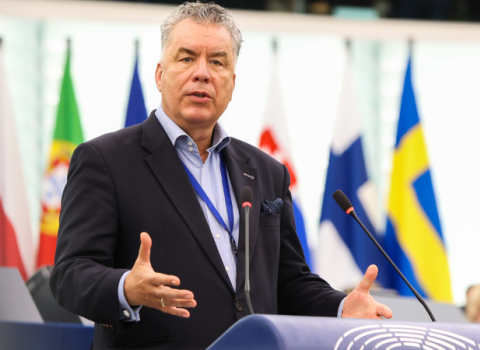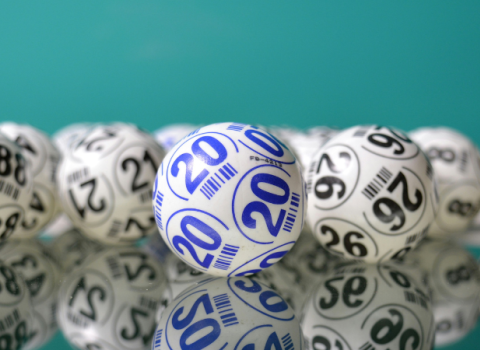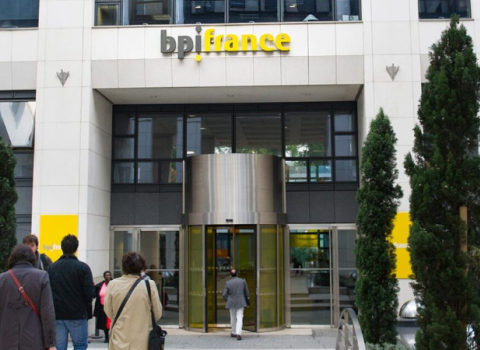DESY hands over 2,000 protective shields to the Kassenärztliche Vereinigung Hamburg (KVH), the Association of Statutory Health Insurance Physicians Hamburg (KVH) and the BPA, the Federal Association of Private Providers of Social Services e.V. (bpa). The shields are produced and assembled at DESY with 3D printers and in the research centre’s workshops. The face shields are being delivered to particularly endangered practices, nursing homes, infectious diseases practices or Covid consultation hours for personal protection against the corona virus. DESY has already handed over over 1000 visors.
"We are pleased that DESY is able to help in the pandemic with hardware from our workshops where the need is greatest," says the Deputy Chairman of the DESY Board of Directors Christian Harringa. "A large team of volunteers, many of them researchers, are producing several hundred shields per week in shifts – of course respecting the protective measures."
The mastermind of the face shield manufacturing at DESY is Beate Heinemann, lead scientist in the ATLAS group at DESY and professor at the University of Freiburg. As a member of the “CERN against COVID” task force at the CERN research centre in Geneva, Switzerland, she learned that there are various ways to help medical personnel by building protective equipment.
A doctor friend of hers confirmed that there is an enormous need for exactly such protective equipment for medical personnel in Hamburg. So a team of physicists, engineers and technicians from the high-energy physics community spontaneously got together to set up a plan how DESY, with its enormous technical possibilities, could help.
Shortly afterwards, the first test shield came off the printer at DESY based on a printing template freely available on the internet. However, the production of a single shield took three hours. By now, one of DESY’s rapid prototyping experts, Katharina Jähnke, has adapted the printing template in such a way that around 35 shields can be produced per day.
At the same time, however, the team was looking for an even more efficient design. They developed an aluminium bracket similar to the printer model. After three test variants, each of which tested by medical personnel under working conditions, they arrived at a prototype consisting of two aluminium brackets. The protective screen is attached at the front and is tied together at the back of the head. It was also important that the shield could be easily disinfected. The doctor friend was enthusiastic: “You hardly notice these things – they can be worn loosely all day long. They'll go like hot cakes!”
The shields went into mass production. In the central workshop, the aluminium brackets were produced using the large water cutting machine and afterwards bent. In the ATLAS seminar room in building 1, the shields were assembled. More than 30 volunteers – from students to group leaders – worked in shifts of up to three people each (naturally in compliance with DESY's work and social distancing rules) and cut, riveted and knotted. In the meantime, the shield design was converted to a model made entirely of plastic. The printshop is also involved, since all the shields are provided with stickers. Some 100 in-house design shields are produced every day. The production line is still running – interested volunteers from DESY can contact Beate Heinemann.
In parallel, Heinemann scouted for suppliers for the components. For example, she found a company in Wandsbek for the protective film, which coincidentally also offered rolls of rubber bands – a rare commodity during the COVID-19 crisis. Heinemann’s car has now become a courier vehicle for protective film, and she has even used it to drive some of the shields around. On her friend's advice, she contacted the Kassenärztliche Vereinigung Hamburg (KVH), the umbrella organisation for contract physicians in Hamburg. The KVH sent their courier to pick up the first production series, and after some small corrections in the design, the KVH expressed interest in 2000 shields from the printer. The bpa, the umbrella organisation for social institutions, showed great interest in the handmade shields.
“This is all completely new territory for me,” Heinemann laughs. “As a scientist, I’m quite good at organising, but launching a product line is a completely new experience. Fortunately, there was active support from many sides at DESY, without which this would never have been possible. It’s really great how helpful all the colleagues at DESY are – from the goods department, which also takes care of packing the finished shields, to many technicians in various departments, to directors who helped to get around administrative hurdles quickly and unbureaucratically.”
Dr. Dirk Heinrich, Chairman of the Representative Assembly of the KVH and ENT physicians in Hamburg Horn, said on receiving the shields: "The active help provided by DESY is important for the outpatient care of the people in Hamburg, since the visors provide additional protection - especially for the eyes - during the treatment and care of patients. The visors will be of particular benefit to physicians in general practitioners' and ENT practices as well as in Hamburg's infectious disease practices, which focus on the diagnosis of infectious patients and also perform corona tests, but of course also to MFAs and patients. The contract physicians are extremely grateful for this."
Karin Kaiser, chairwoman of the bpa Hamburg regional group, which represents more than 330 care facilities and services, emphasises the importance of the donation of almost 300 protective visors: "We are very grateful. Protective glasses and visors are hardly available at present, but are urgently needed in the care of patients to protect the people entrusted to us. We are happy to receive offers for further production.”
The Deutsches Elektronen-Synchrotron DESY in the Helmholtz Association is a research centre for basic scientific research based in Hamburg and Zeuthen. At the moment, DESY is slowly coming out of reduced operating mode; many employees are working from home. A team led by the lead scientist and Professor Beate Heinemann came together spontaneously to develop and produce face shields for medical and nursing staff based on templates from the internet and their own design. Each day, DESY can produce about 35 face shields with 3D printers and another 100 from the in-house design. Over 1000 shields have already been delivered to KVH, individual practices and nursing homes.
Meanwhile, investigations are underway at DESY's X-ray source PETRA III to identify possible active agents against the corona virus SARS-CoV-2 by means of X-ray screening. DESY also provides computing power for projects dealing with protein folding.
This article was first published on 8 May by DESY.





 A unique international forum for public research organisations and companies to connect their external engagement with strategic interests around their R&D system.
A unique international forum for public research organisations and companies to connect their external engagement with strategic interests around their R&D system.